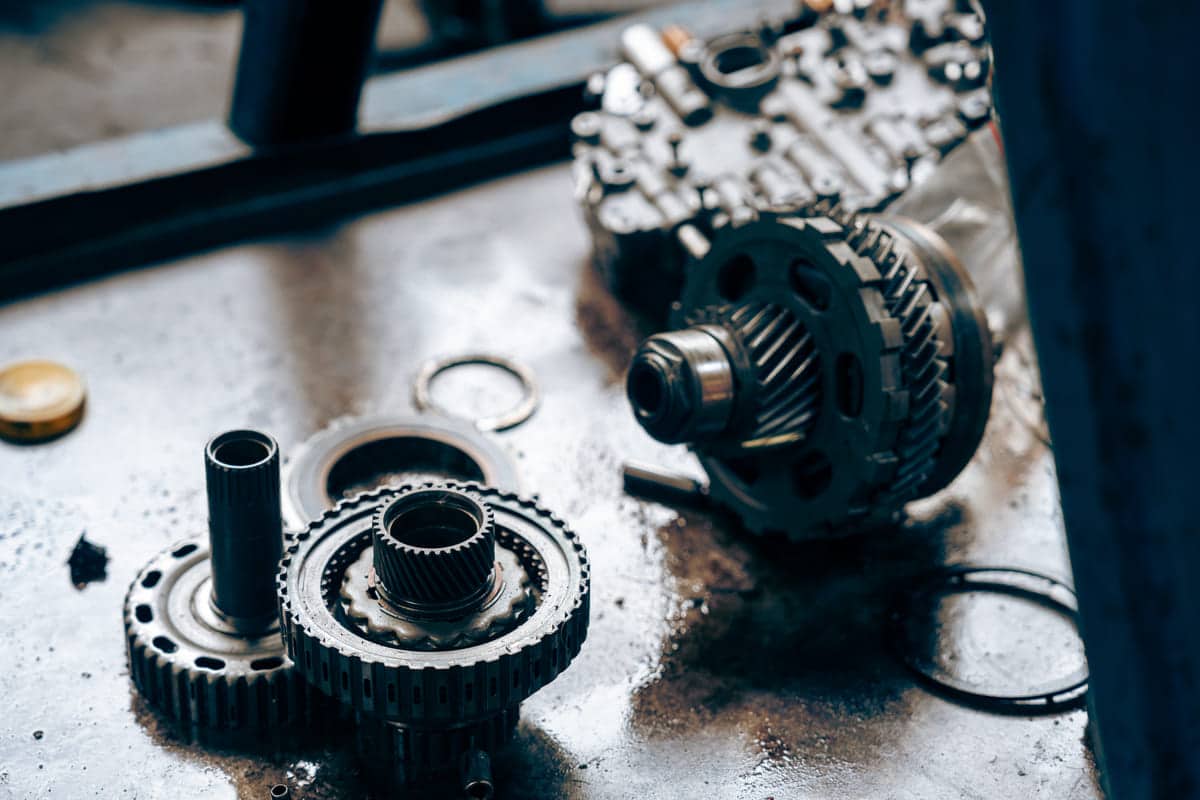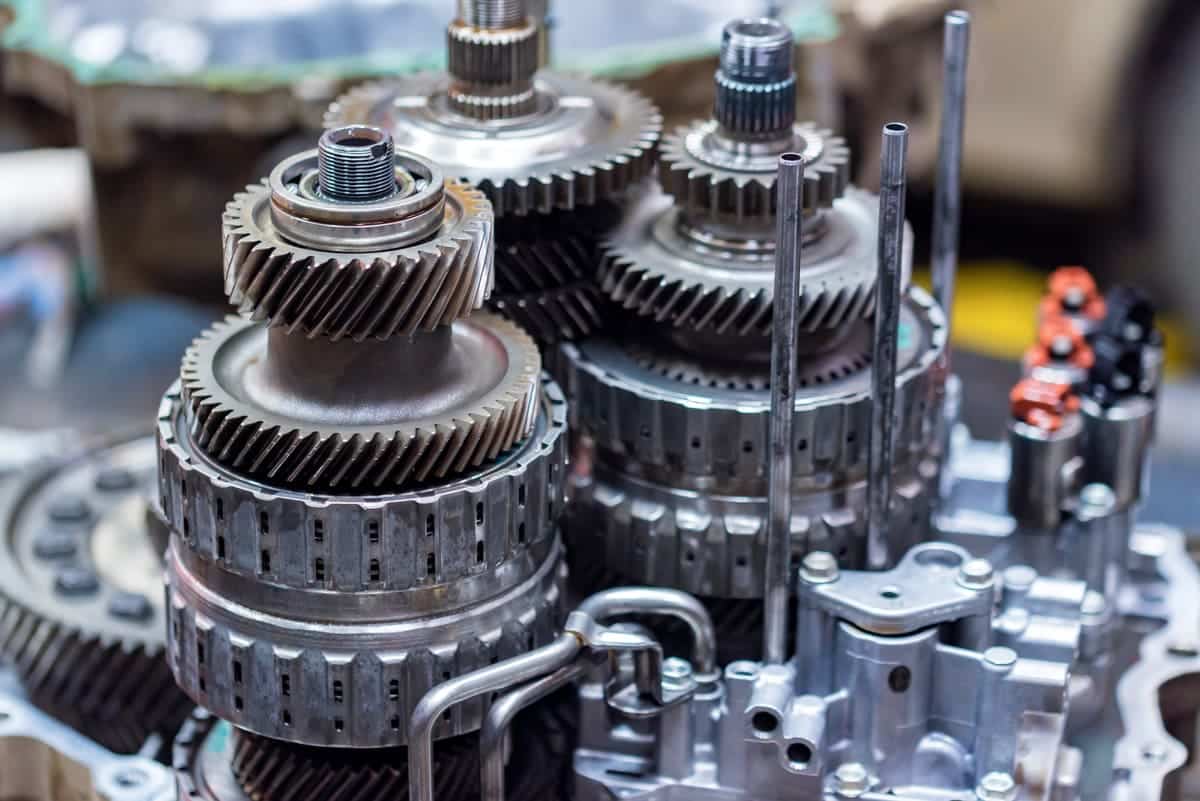Transmissions are key to vehicle performance by managing power and improving driving dynamics. They do gear shifts smoothly and efficiently for modern technology.
What Is a Transmission?
A car transmission is part of the drivetrain that transfers power from the engine to the wheels.
There are two types: automatic and manual. In manual transmissions, drivers use a pedal and shifter to change gears manually.
Manual transmissions have different types like dual-clutch, unsynchronized, synchronized, automated and preselector. Automatic transmissions change gears using a torque converter, no need to shift manually.
How a transmission works depends on its type. Both types allow the gear ratio between the engine and drive wheels to adjust as the car accelerates or decelerates.
When a vehicle stops, the transmission disengages the engine from the drive wheels, letting the engine idle when the wheels are not moving. Transmissions also helps in quick acceleration from stop and reduces engine wear at constant speed.
References
- Transmission (mechanical device). Wikipedia. Retrieved from
- Transmission Engineering. Britannica. Retrieved from
What are the Different Types of Car Transmissions?
A transmission is part of a car. It takes power from the engine and sends it to the wheels. This allows the car to move at different speeds and be efficient.
Below are the Different types of transmissions:
Manual Transmission
In , drivers use a clutch pedal and gear shifter to change gears. This requires more skill and control as you need to match the engine speed with the speed.
Automatic Transmission
changes gears by itself. It uses a torque converter instead of a clutch. This makes driving easier as you don’t need to shift manually.
Dual-Clutch Transmission
A dual-clutch transmission (DCT) has two clutches. One clutch controls odd gears and the other controls even gears. This allows faster and smoother shifting without losing power.
Unsynchronized Transmission
Unsynchronized transmissions are found in heavy machinery. You need to match the engine speed with the wheel speed before shifting. This is less common in everyday cars.
Synchronized/Constant Mesh Transmission
A synchronized transmission uses synchronizers to match the engine speed with the wheel speed automatically. This makes shifting gears smoother and easier compared to unsynchronized.
Automated Manual Transmission
An automated manual transmission (AMT) is like a manual transmission but has an automated clutch and shifter. It has the efficiency of a manual with the ease of an automatic.
Preselector Transmission
A preselector transmission allows the driver to “pre-select” the next gear. When you press the clutch, the car shifts to the chosen gear. This was popular in older vehicles but is rare today.
References
- Types of Car Transmissions. Spinny. Retrieved from
- Transmission. Universal Technical Institute. Retrieved from

How Does the Transmission Works in a Motor Vehicle?
A transmission helps a car to change speeds and be efficient. Here’s how it works:
Step 1: Engine Produces Power
The engine produces power by burning fuel. This power needs to go to the wheels to make the car move. The transmission plays a big role in transferring this power.
Step 2: Transmission Gets Power
The transmission gets the power from the engine. It’s connected to the engine by a flywheel or clutch in manual cars and a torque converter in automatics. This connection is key to smooth power transfer.
Step 3: Gears Adjust Speed and Torque
Inside the transmission, gears change the speed and torque. Lower gears give more torque for starting and climbing hills and higher gears give more speed for highway driving. This adjustment helps in efficient driving.
Step 4: Shifting Gears
In manual transmission, shifting gears requires pressing the clutch pedal and moving the gear shifter. In automatic transmission, the car shifts gears by itself using hydraulic or electronic controls to provide a smooth and easier driving.
Step 5: Power Goes to Drive Shaft
After adjusting the speed and torque, the transmission sends the power to the drive shaft. The drive shaft is a long rod that connects the transmission to the wheels. This transfer is key to moving the vehicle.
Step 6: Wheels Turn
The drive shaft turns the wheels. As the wheels turn, they move the car forward or backward depending on the gear. This is what makes the car go where you want it to.
Step 7: Continuous Adjustment
The transmission adjusts the gear ratio as you drive. This ensures the car runs smoothly and efficiently at different speeds. Continuous adjustment helps in optimal performance and fuel efficiency.
References
- How the Transmission Works. How a Car Works. Retrieved from
- Types of Car Transmissions. GoDigit. Retrieved from https://www.godigit.com/motor-insurance/car-insurance/car-parts/types-of-car-transmissions
Know the Common Reasons why your Car Transmission May be Failing?
A car transmission is key to smooth driving. When it starts to fail, your vehicle can have serious problems. Know the signs early to avoid costly repairs. Here are some of the common issues:-
- Low Transmission Fluid: Not enough fluid can cause overheating and damage.
- Leaking Fluid: Leaks are often a sign of worn seals or gaskets.
- Worn Clutch or Gears: This can cause slipping and difficulty in shifting gears.
- Overheating: Excessive heat can damage transmission parts.
- Faulty Sensors: Bad sensors can send wrong signals, affecting shift timing.
- Delayed Shifting: Slow or delayed shifting means internal issues.
- Strange Noises: Unusual sounds mean mechanical problems.
- Burning Smell: A burning smell means the transmission fluid is overheating.
- Check Engine Light: This light can mean various transmission problems.
Understanding these common issues can help you address transmission problems early, keeping your car running smoothly.


